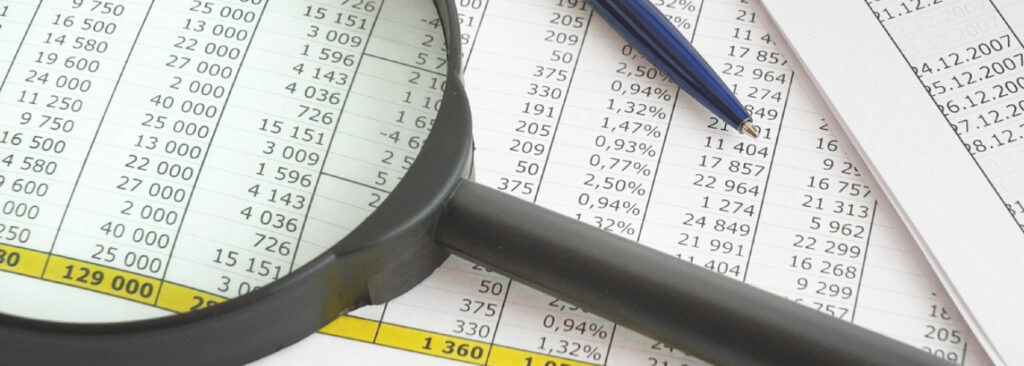What Is Cash Flow
Statements

Companies create three sets of financial statements to demonstrate their performance. The cash flow statement, income statement, and balance sheet are these statements.
An accounting document that lists the company’s cash inflow and outflow for a given time period is called a cash flow statement. It also looks at the variations between previous year and this year.
When a company’s annual report covers a time span that is mostly one year, the cash flow statement is frequently reviewed.
What makes a cash flow statement necessary?
If a company already reports its net profit in its income statement, what use is a cash flow statement?
The income statement is prepared using accrual accounting. Organizations that use accrual accounting track their revenues and costs regardless of whether there is a cash inflow or outflow at the time of the transaction.
For example, when a company sells items on credit and gives the consumer 60 days to pay, they calculate how much they sold and how much money they made from those transactions. The difference between a company’s net profit and actual cash is connected to whether or not they receive reimbursement after 60 days.
Businesses use cash to pay for a variety of expenses such as salaries, interest, and day-to-day costs; it is considered the business’s lifeblood. When a company does not convert its profits into cash, it puts itself at danger.
Investors closely examine the company’s cash flow statement. They do this to comprehend the value of cash and to determine where the company receives its money and where it spends it.

Purpose of Cash Flow Statements
- Assessing cash positions
- Make planning and controlling easy.
- Make comparisons easy.
- Decide on capital budgeting.
Each company’s cash flow statement is divided into three categories: business operations, investment activities, and interest expenses. Furthermore, in each division, net cash flow is computed by subtracting cash outflow from cash inflow. The change in cash flow is calculated by aggregating these three net profits.
What are the sections of a cash flow statement?
The cash flow statement summarizes a company’s significant cash flows in the following categories:
1. Cash Flow from Operating Activities:
The first section of the statement describes regular business activity. Revenue comes from the sale of goods or services, dividends, interest, and other cash receipts, while outflows include wages, overheads, taxes, and payments to suppliers and vendors.
The first entry in this operating activity section is the net income from the income statement for the relevant period. The following table displays the cash flow from operating activities:
| Particulars | Amount (Rs) |
|---|---|
| Cash flow from operating activities | |
| Net income | XXX |
| Additions | |
| Depreciation and Amortisation | XXX |
| Increase in current liabilities | XXX |
| Deductions | |
| Increase in current assets | XXX |
| Net cash flow from operating activities | XXX |
2. Cash flow from investment activities:
- Cash outflow due to the purchase of an asset (land, building, machinery, etc.).
- The acquisition of another company results in a cash outflow.
- Cash inflows from asset sales.
The table shows the items documented in this section:
| Particulars | Amount (Rs) |
|---|---|
| Purchase of fixed assets | (XXX) |
| Purchase of marketable and non-marketable securities | (XXX) |
| Proceeds from the sale of fixed assets | XXX |
| Proceeds from the sale of marketable and non-marketable securities | XXX |
| Loans advanced | (XXX) |
| Loan repayment realised | XXX |
| Insurance proceeds | XXX |
3. Cash flow from Financing activities:
These activities are related to cash transactions in business. Borrowing, raising funds from debt or stock, repaying, selling your company’s securities, and outflows such as dividend payments and debt servicing are some examples. It also gives stakeholders information about the company’s capital structure, how it is handled, and how far it can go with the presented money.
The following table shows the components of funding activities.
| Particulars | Amount (Rs) |
|---|---|
| Proceeds from the issuance of short-term borrowings | XXX |
| The net change in short-term borrowings | (XXX) |
| Repayments of long-term debt | (XXX) |
| Stock repurchases | (XXX) |
| Dividends paid | (XXX) |
| Dividends paid to non-controlling interest | (XXX) |
| Other financing activities | (XXX) |
| Net cash flow from financing activities | (XXX) |
A positive cash flow is a good indicator for any firm, but it does not guarantee success. Even profitable organizations experience negative cash flow.


INVEST MP Expression of Interest (EOI) For Inviting Online Tender…

Special Advance Authorization for Garments View Sample Report Directorate General…

Unutilized Input Tax Credit Refund Under GST View Sample Report An…

What is MSME Loan? View Sample Report Entrepreneurs and business owners…

ICICI Bank Business Loan View Sample Report ICICI Bank business loan…

PNB Bank Business Loan View Sample Report (Punjab National Bank) PNB Bank Business…

HDFC Bank Business Loan View Sample Report HDFC Bank Business Loan…

Equipment Finance Scheme For Existing Clients – TIIC View Sample…

Documents Required For GST Registration View Sample Report Goods and Services…

Most Popular Loan Schemes In India In 2024 View Sample Report The following…

Citibank Business Loans View Sample Report Citibank Business Loan provides business…


